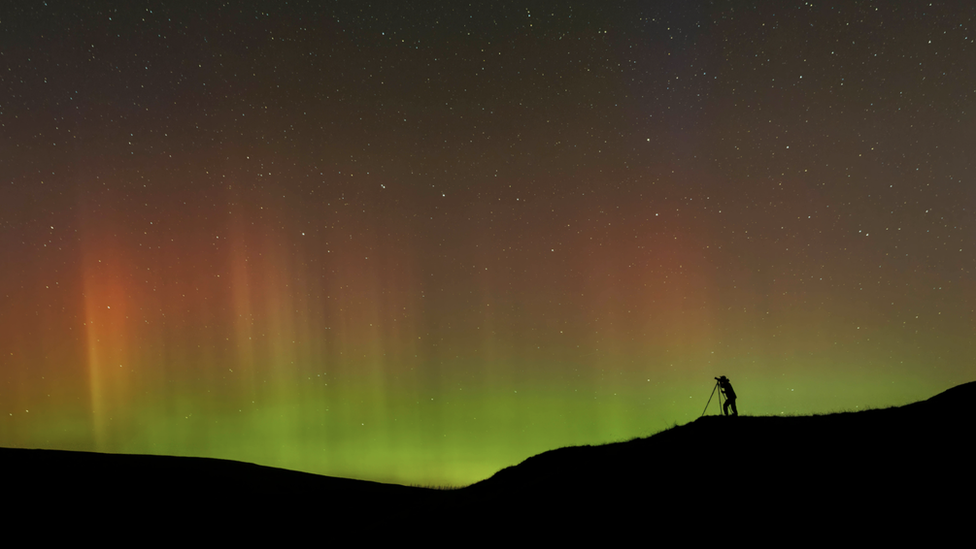Spectacular autumn aurora
- Published

Aurora watcher in Cumbria with camera pointing into the night sky filled with the northern lights
As our night sky becomes darker after the lighter summer months, the aurora has started to put on a show.
While the aurora or northern lights can happen all year round, we need dark skies to be able to see it. As we move further into autumn, daylight is decreasing at a rapid rate of four or five minutes each day.
The aurora also tends to be more visible around the equinox as this is the time earth is neither pointed towards or away from the sun in its orientation.
Following a geomagnetic storm on the Sun sending charged particles towards our atmosphere, sightings of the aurora are likely to become more regular as we approach the peak in solar activity in 2025.
With a moderate geomagnetic storm on the sun, charged particles enter our atmosphere and interact with oxygen and nitrogen. This releases the red and purple colours of the aurora.
Aurora watchers are alerted to these solar storms and are often ready with their cameras to capture this spectacular phenomenon.
Aurora watcher in Cumbria with camera pointing into the night sky filled with the northern lights
The first vivid aurora of the autumn in Argyll and Bute
Βι¶ΉΤΌΕΔ Weather Watchers sent in pictures from Aberdeenshire, Cumbria, Lancashire and even as far south as Cornwall.
Aurora spotted as far south as Penzance in Cornwall
The sun has an 11-year cycle in activity where the number of sunspots changes. It transitions from a minimum where there are few sunspots to a maximum where there are lots of sunspots.
It's these sunspots that erupt and produce coronal mass ejections (CME's) sending a solar wind with charged particles into space. We've seen the number of sunspots increase as we move closer to the next solar maximum in 2025 so there is a greater chance that a sunspot and CME travels towards Earth.
Northern lights in Banchory, Aberdeenshire
Spectacular display of the aurora in Aberdeenshire